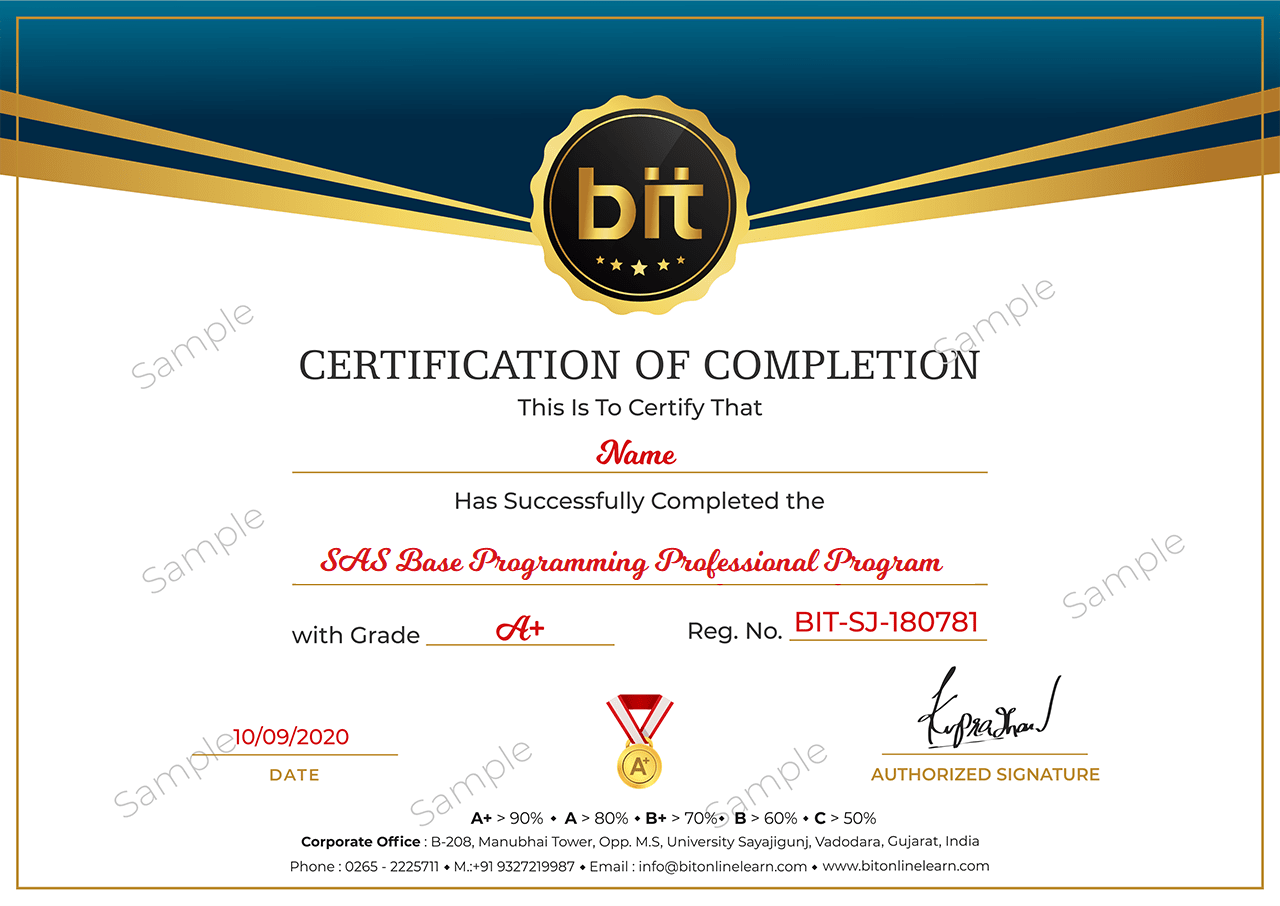· Introduction to SAS programs
· Submitting a SAS program
· Working with SAS program syntax
· Practical Exercise

Base SAS (Statistical Analysis System) training is a good way to enter into the data analytics industry. You will also work on real-life projects and prepare for the SAS Certified Base Programmer certification exam under SAS Base Programming Online Training.

Base SAS (Statistical Analysis System) training is a good way to enter into the data analytics industry. This Base SAS Programming online training course provides the concepts along with hands-on experience on writing SAS programs, understanding data sets, sub-setting data sets, creating summary reports with different procedures, controlling input and output. Participants build proficiency in data manipulation and debugging techniques. The training will drive the trainees through SAS windowing environment for executing conditional code, SAS array processing; and introduces other SAS languages.
Base SAS is software that performs powerful statistical analysis on data that can be retrieved from multiple sources. It offers a point-and-click user interface with graphics for simpler tasks and SAS language for more technical ones.This course focuses on Base SAS, a software suite for big data analysis that has been the industry standard for decades. SAS performs data analysis in two steps. First, it compiles and organizes raw data into tables, and then it analyzes the data and produces reports in the form of statistics or graphics. It is able to perform more than 300 procedures on data—just about anything and everything that a major company would want to do with data. Base SAS Certification online training program starts off with a quick review of the basic concepts used in data analysis and statistics. It then introduces datasets and how they are put together, covering SAS libraries and tools.

Copyright Bitonlinelearn © 2021. All Rights Reserved | Design and Developed By BITINFOTECH